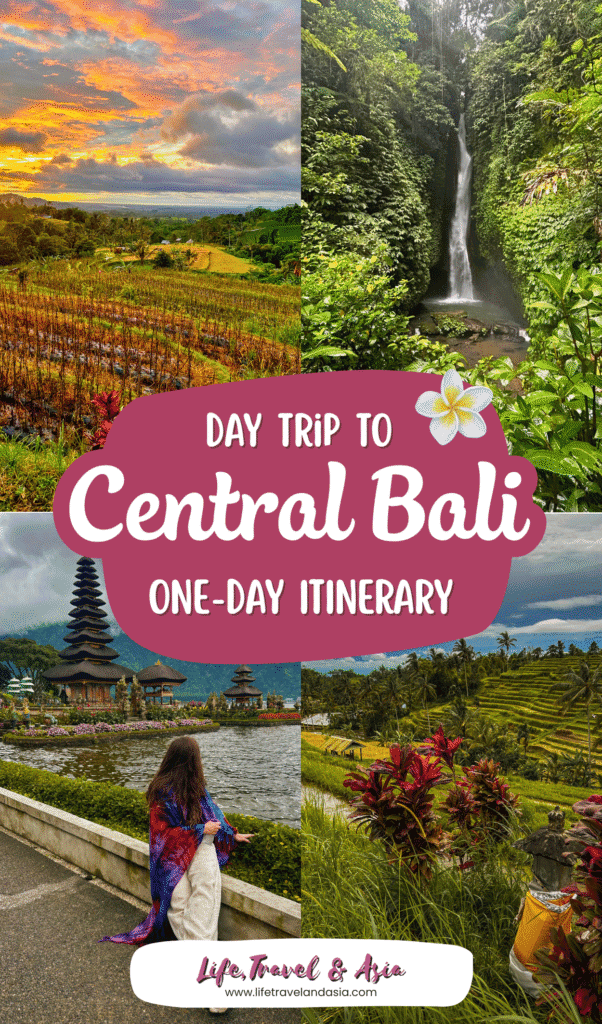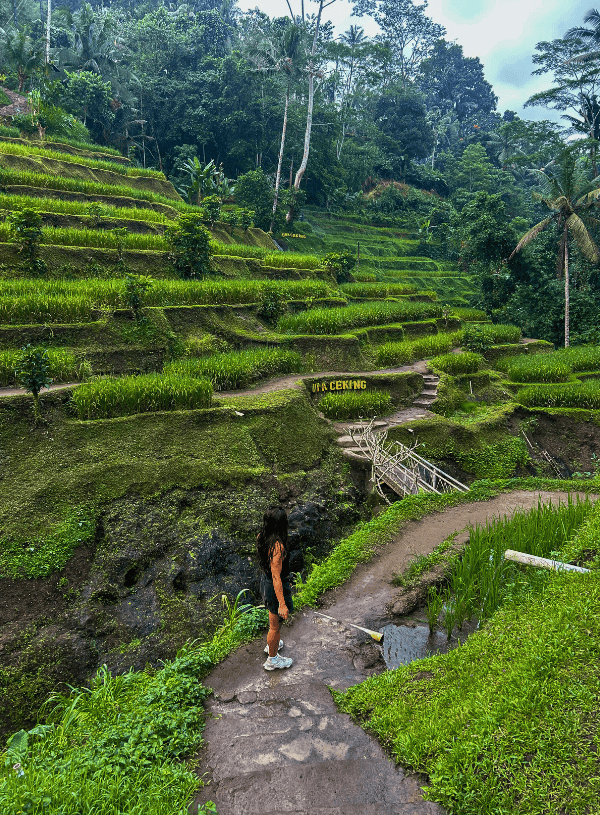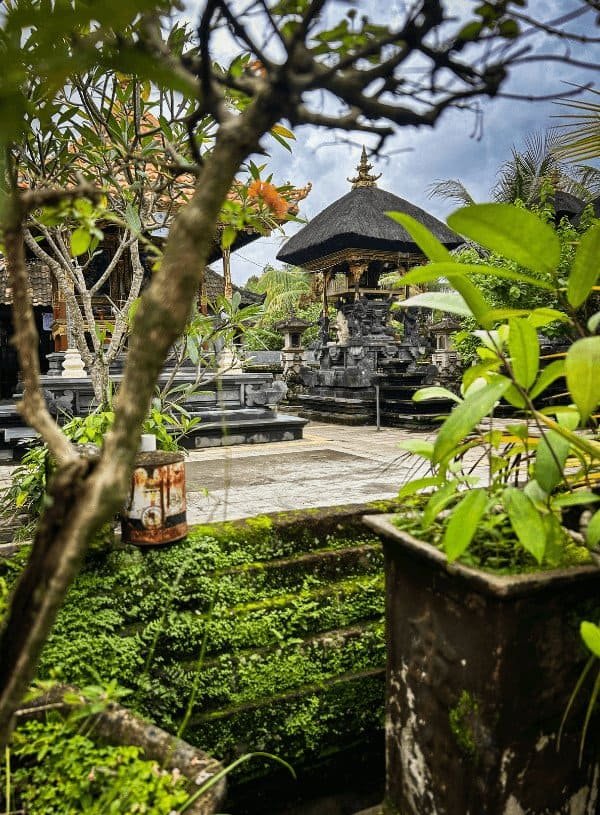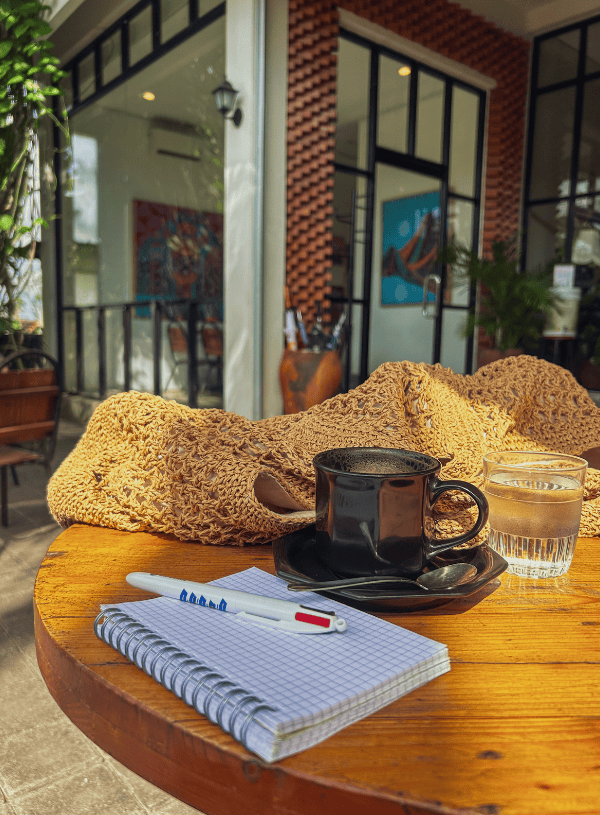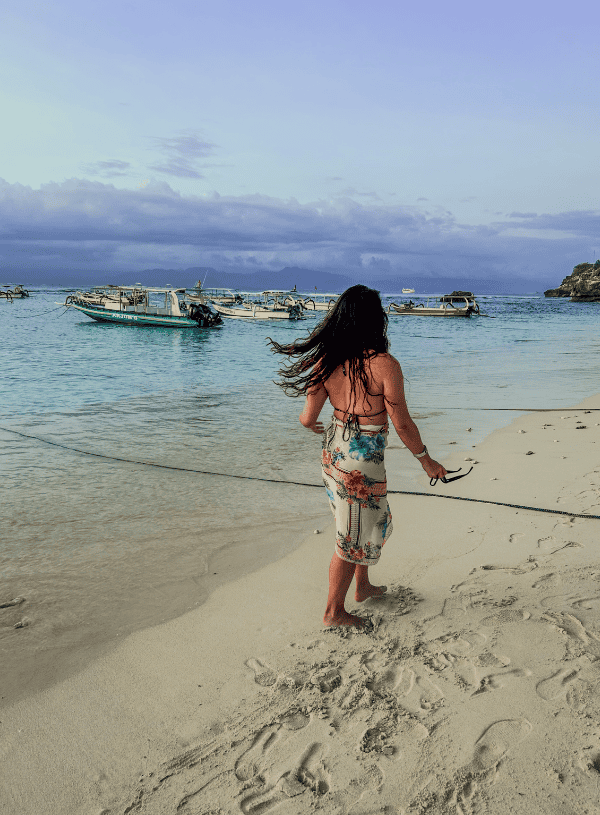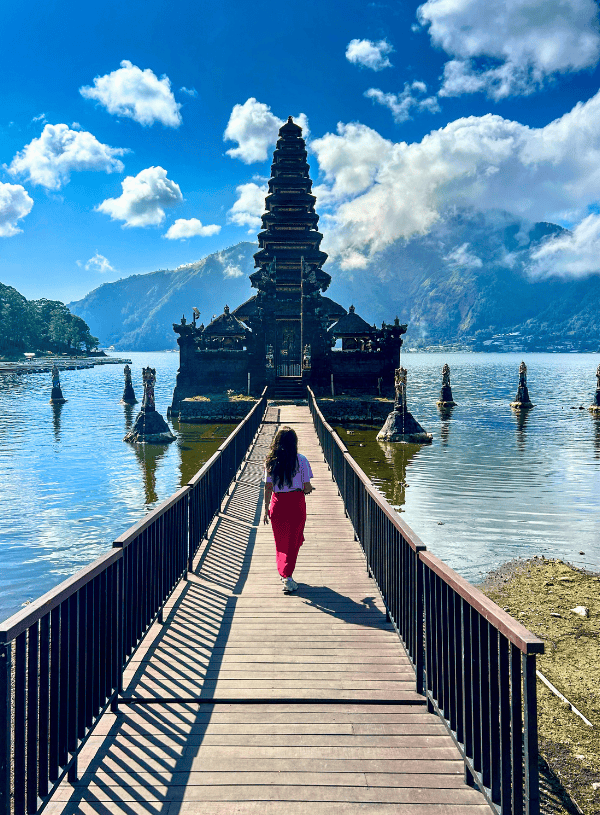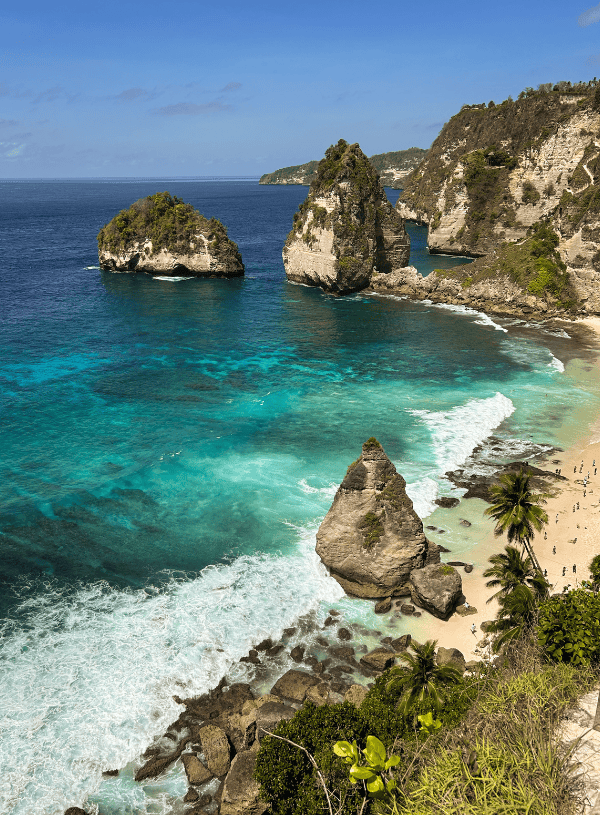Central Bali Day Trip: Discover the Authentic Heart of Bali in Just One Day
Last Updated on November 12, 2025
Are you planning your holidays in Bali and looking for some fun day trips? A day trip to Central Bali is one of my favorites.
Not only is it the perfect opportunity to explore a different side of Bali — one that revolves around agriculture, tradition, and connection with nature — but it’s also the ideal escape if you’ve had enough of crowds and touristy activities in South Bali. Trust me, you won’t regret it.
In this article, I share how to plan your Central Bali day trip: what to expect, the best places to visit, and a few logistical tips to ensure your trip runs smoothly.
This article may contain affiliate links. This means that if you purchase through one of the links, I may be paid a small commission at no extra cost to you. Thank you for supporting the blog and allowing me to keep sharing meaningful travel experiences with you.
Don’t have time now?📌 Save it for later!
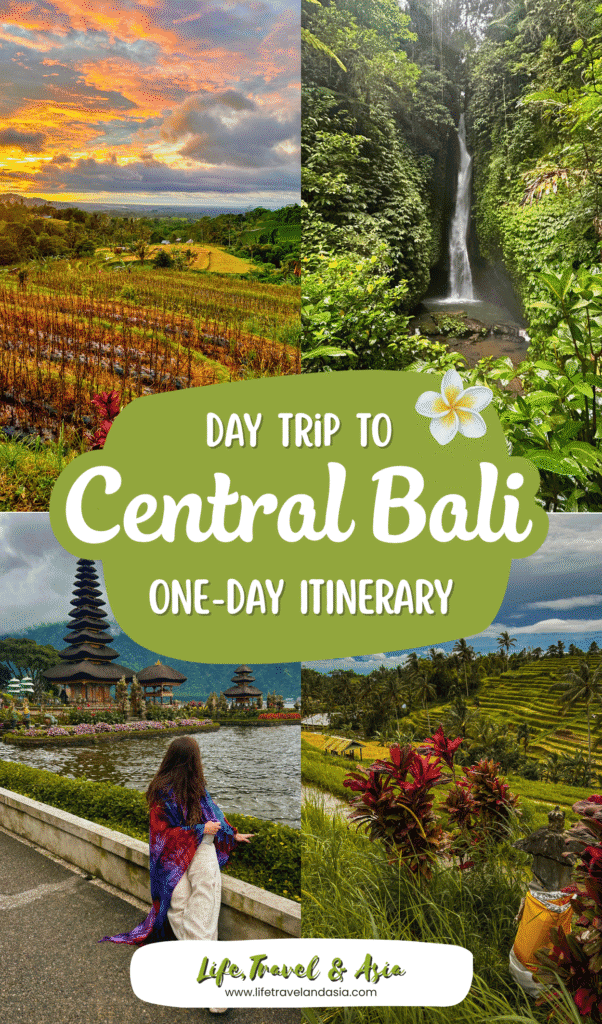
Is Central Bali Worth Visiting On A Day Trip?
Central Bali is worth visiting, especially if you’re looking to experience its more authentic, traditional side. Unfortunately, places like Canggu or Seminyak have become too touristy and crowded to catch glimpses of the small religious rituals and traditions that are part of Balinese Hindu communities.
Heading to Central Bali means exploring a side of the island that’s still largely untouched by mass tourism — especially in its small villages — where daily life revolves around farming, rice cultivation, and simple routines.
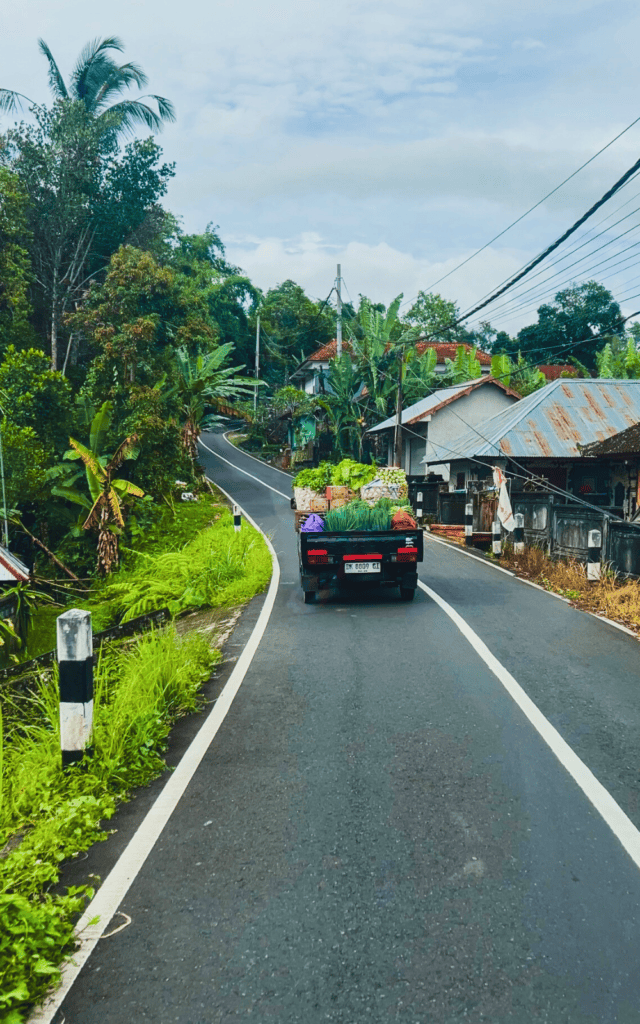
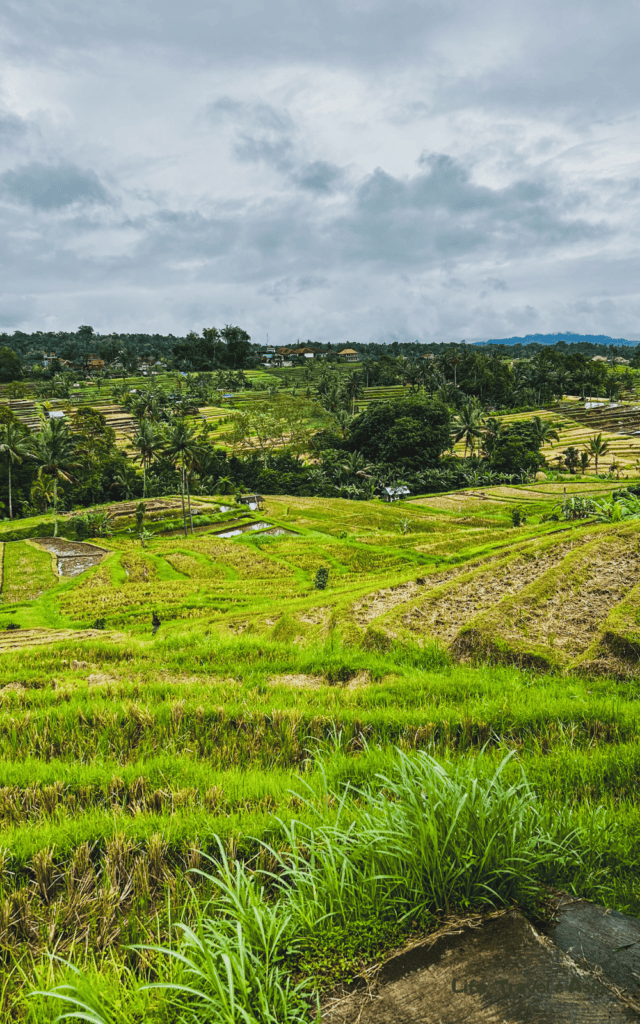
Here, you’ll find no traffic — just cheerful kids zipping by on motorbikes or carts overflowing with fresh vegetables. Family-run warungs, tiny craft shops, and vivid green rice terraces line both sides of the road.
There are no fancy malls or internet cafés here — only simple home compounds with family temples, lush greenery everywhere, the occasional small shop, and, of course, those beautiful, colorful canang sari offerings decorating the sidewalks.
How to Plan Your Central Bali Day Trip
1. Travel Times & Distances
When referring to Central Bali, people usually mean the areas around Bedugul, about an hour from Ubud, depending on traffic.
A Central Bali day trip is ideal if you’re staying in Ubud and looking to explore beyond town. However, you can also plan your trip from further south.
Here are the average travel times from popular areas in Bali:
- Seminyak / Canggu: 38 km (around 1.5 hours)
- Sanur: 55 km (about 1 hour and 40 minutes)
- Uluwatu: 66 km (around 2 hours and 40 minutes) — I wouldn’t recommend a day trip to Central Bali from Uluwatu unless you leave very early in the morning.
- Padang Bai (East Bali): 67 km (about 2 hours)
2. How to Get to & Around Central Bali
Renting a scooter is the most flexible and affordable way to get to and around in Central Bali. It gives you complete freedom to stop wherever you like and discover places at your own pace.
Scooter rentals are fairly cheap in Bali, starting at around IDR 80,000/day ($). However, traffic in Bali is wild, and not everyone feels comfortable driving in those conditions (I’m no exception).
Which is why hiring a driver or joining a tour could be the best option if you’re traveling solo or don’t want to drive yourself all the way to central Bali. When hiring a driver, you can agree on an itinerary for the day, and he/she will drive you around for 6-10 hours (depending on what is agreed).
After a few not-so-great experiences with other providers, I finally found a driver who offers transparency from the start, so all you have to do is enjoy your day trip. You can book their service here.
3. Best Central Bali Tours
If you’re traveling solo and want to save some money, consider joining a tour. Below, you’ll find a few options I’d consider when booking mine.
- Bali’s Iconic Sights | Waterfall, UNESCO, Water Temple: One of the most beautiful tours in Central Bali, including the stunning Sekumpul Waterfall, located about 1.5 hours from central Bali, the Jatiluwih Rice Terraces, and, of course, Pura Ulun Danu Bratan.
- Bali: Water Temple, Waterfalls, and UNESCO Rice Terrace: One of the most complete tours of Central (and beyond) Bali. It includes my favorite waterfall, Leke Leke, and the breathtaking Banyumala in North Bali. You’ll also get to see Pura Ulun Danu Bratan and Tanah Lot — and wrap up with a visit to the Jatiluwih Rice Terraces.
- Waterfalls Tour in Central Bali: This tour includes three of Bali’s stunning waterfalls: Nungnung, the mystical Goa Gong, and my favorite Leke Leke. The tour ends with a stop at Jatiluwih Rice Terraces.
4. The Best Time to Visit Central Bali
When it comes to the best time of day to visit Central Bali, the answer is definitely the morning.
This region often gets cloudy and foggy by the afternoon, with a higher chance of rain. Visiting early in the day is the best way to enjoy clear views over the rice fields or the mountainous landscape surrounding Lake Bratan.
As for the best time of year, it’s usually during the dry season, which runs from March or April to September. However, after living here for a while, I’ve realized there are no real rules when it comes to rain — you can still get a full day of showers even during the dry season.
Ideally, check the weather in the morning before heading out (especially if you’re riding a scooter). And even if it looks sunny, expect rain later in the afternoon.
Central Bali Day Trip Itinerary
One day in Central Bali is enough to include its three major sights —Pura Ulun Danu Beratan, Leke Leke Waterfall, and Jatiluwih Rice Fields —along with a few other spots in the area.
1. Pura Ulun Danu Beratan
Entrance Fee and Opening Hours: IDR 75,000 ($5) – Open from 8 am to 6 pm
Pura Ulun Danu, located on the scenic Beratan Lake, is best visited as early as possible in the morning. It’s probably the most touristy (and least authentic) experience in Central Bali — but absolutely worth seeing.
The beauty of this site lies in its enchanting Meru-style shrines that appear to float on the still waters of the lake.
The scenery surrounding the temple is what truly makes it special — the lush green hills of Bedugul frame Lake Beratan, and the mist that often covers their peaks creates a wonderfully atmospheric setting.
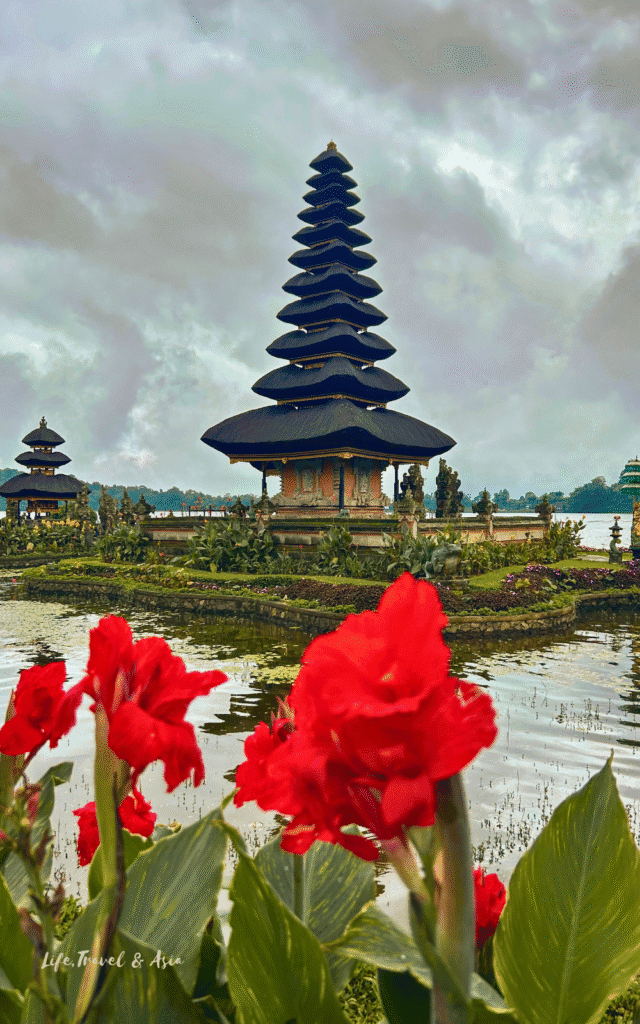
That said, despite its deep spiritual significance, the temple area feels quite touristy. It resembles a large theme park where kids can play and tourists can spend money at overpriced cafés, animal-feeding spots, and photo booths with traditional attire.
It’s a pity, because this is the island’s most important water temple, located near the vital water source that feeds Bali’s rice fields.
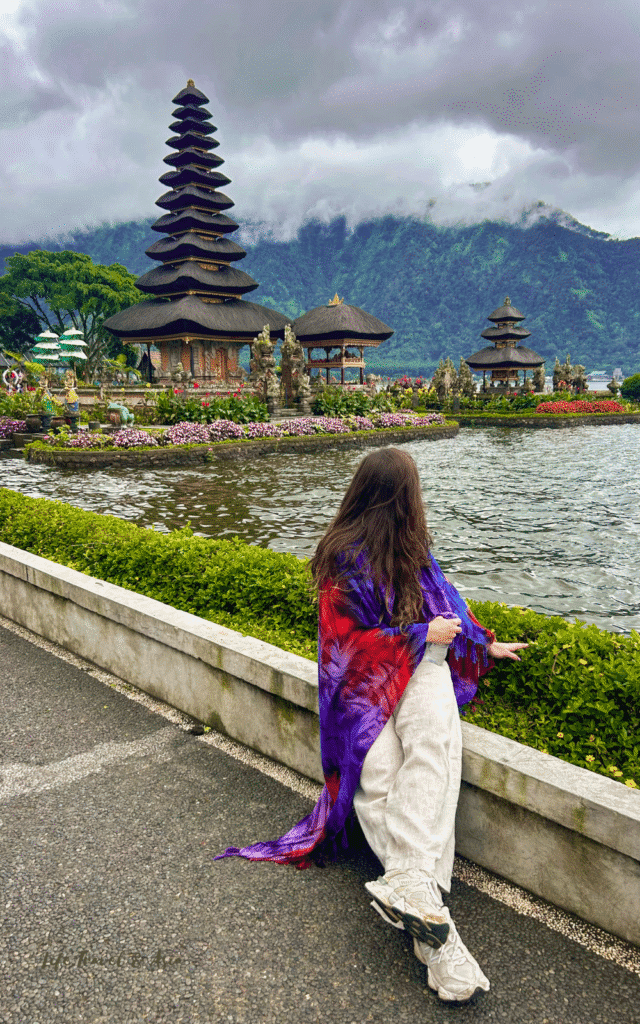
A better way to visit might be to rent a jukung (a traditional Indonesian boat) and see the beautiful shrines — along with other natural spots around the lake — from the water itself.
If you’re curious about the best way to visit the temple — including how to rent a jukung to see it from a different perspective — check out my guide to Pura Ulun Danu.
2. Jatiluwih Rice Terraces
Entrance Fee and Opening Hours: IDR 50,000 (about $3.50) – Open from 6:00 am to 7:00 pm
The rice terraces of Jatiluwih are the most breathtaking I’ve seen in Bali. They’re often overlooked compared to the rice fields in Tegallalang, but honestly, they’re on a completely different level.
The Jatiluwih Rice Terraces span over 600 hectares across the foothills of Mount Batukaru — part of a UNESCO World Heritage–protected Subak System — and they remain the daily workplace of thousands of Balinese farmers.

The Subak is an irrigation system that is still fundamental to Balinese life today. It’s more than just watering fields — it’s a complex ecosystem that connects community, nature, and spirituality.
That’s why exploring these rice fields is about much more than the views. It’s about connecting with the real life of Balinese communities and meeting locals who see this place as their home, not just a tourist attraction.
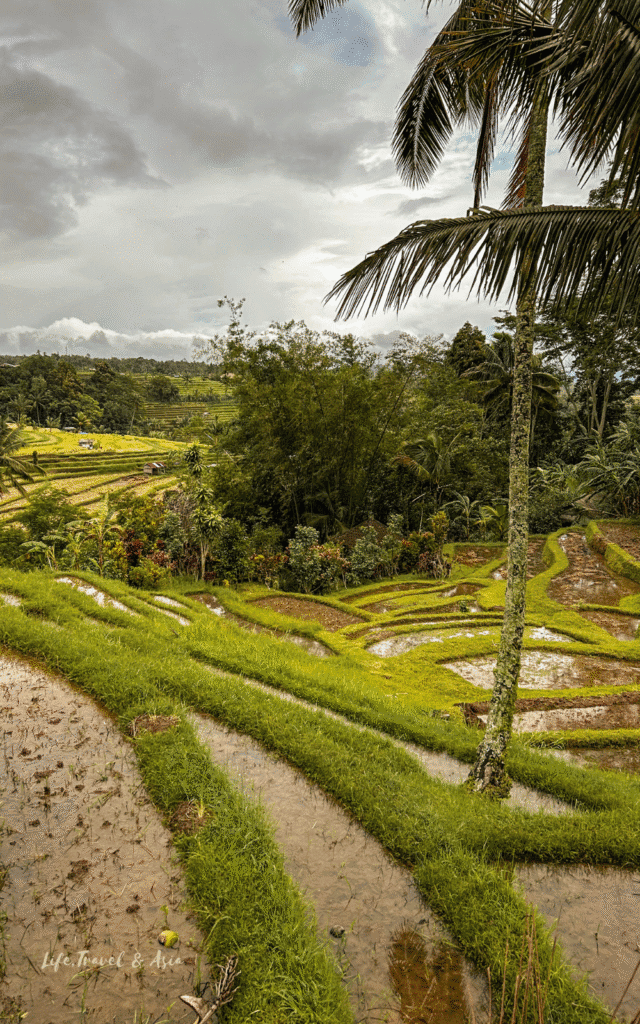
If Pura Ulun Danu felt like the least authentic experience, Jatiluwih is definitely the best way to discover the real Bali.
Hiking around the terraces is the most popular activity here, and you can easily spend one to two hours exploring the area.
To discover all the hiking routes and plan your visit to the rice fields, check out my guide to Jatiluwih — you’ll also find a few great spots for lunch nearby. Having lunch with views of the rice terraces is definitely one of the highlights here!
3. Leke Leke Waterfall
Entrance Fee and Opening Hours: IDR 50,000 ($3) – Open from 7 am to 6 pm
Leke Leke is one of my favorite waterfalls in Bali. After living here for a while and visiting many of them, I genuinely believe there’s something special about it.
Maybe it’s the fact that it’s hidden deep in the jungle, the way it flows straight out of the rocks, or that feeling of standing beneath its mighty cascade, completely connected to the nature around you.
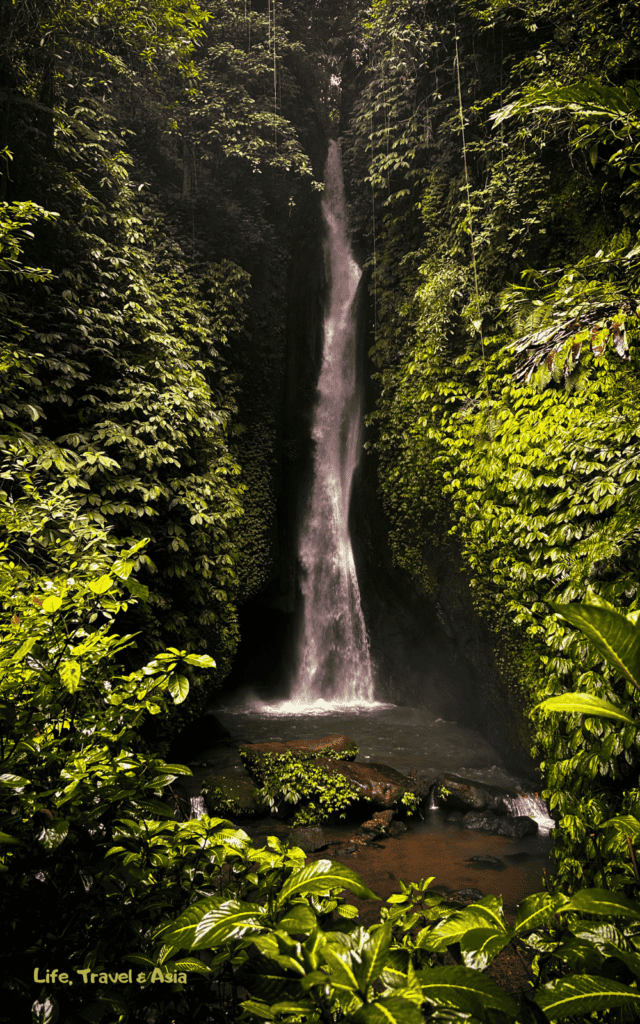
The pool where the waterfall lands is perfect for swimming, and the water isn’t too cold. (Still, I’d keep lunch light if you’re visiting right after!). But what makes it truly special — beyond the waterfall itself — is the path leading to it.
You’ll walk downstream for about 30 minutes, and it’s a truly immersive experience. The trail still feels wild and untouched, especially compared to many of Bali’s more touristy falls.
You’ll be surrounded by dense jungle, with nothing but the sounds of nature in the background.
If you’re curious about what makes this waterfall so special and how to plan your visit — including what to pack — make sure to check out my guide to visiting Leke Leke Waterfall.
Other Places to Visit In Central Bali
The locations mentioned above are the ones I personally visited in Central Bali and would recommend for a day trip.
I’m not a fan of packing a day trip to check off a list of sights, but if you find yourself with some extra time and want to explore a few more places to visit in Central Bali, here are a couple of ideas.
1. Bali Botanical Garden
The Botanical Garden is very close to Pura Ulun Danu and is the largest botanical garden in Indonesia. It’s well worth a visit, as it’s often overlooked and not at all touristy. It’s a vast highland garden surrounded by misty forests and the cool mountain air of the Bedugul region. Here, you’ll find open green spaces, forest trails, and rare plant species.
2. Batukaru Temple
Located on the southern slopes of Mount Batukaru (at around 25 minutes from Jatiluwih), Pura Luhur Batukaru is one of the most significant temples in the area. The temple is nestled within misty forests that cover the mountain’s slopes, and since it’s not overcrowded with tourists, the spiritual atmosphere — enhanced by the surrounding silence — feels truly palpable.
3. Banyumala Twin Waterfalls
Banyumala Waterfall is farther away (about 1 hour from Jatiluwih) and is located in the northern hills near Munduk. Surrounded by jungle, it’s one of those places where you can truly enjoy the peaceful side of the island. Even though it’s becoming more well-known, Banyumala still feels authentic and not overcrowded.
What to Pack For Your Central Bali Day Trip
There are a couple of items you should remember when packing your backpack for your day trip to Central Bali:
- Cash: Most entrance tickets for waterfalls, temples, and rice terraces need to be paid in cash, so make sure you carry small denominations — ticket booths don’t always have change.
- Wear Comfortable Shoes/Hiking Sandals (especially around the rice terraces)
- Sturdy flip-flops: The path to the waterfalls can get muddy, and you’ll need to cross a few bamboo bridges.
- Dry clothes to get changed after swimming in the waterfall
- Insect repellent: In the jungle, it’s usually very humid, and mosquitoes are in full force (especially during the rainy season).
- Sunscreen
- A quick-drying towel: For drying off after your swim
- Water bottle
Where to Stay in Central Bali
If you’re planning to stay overnight in Central Bali (which is what I did), I loved my stay at Village Above the Clouds in Bedugul.
It’s the ideal place to enjoy the peace and nature of this region. Each small bungalow has a large window overlooking the surrounding rice fields, where you can catch both sunrise and sunset.
The property also offers yoga classes and has a restaurant serving breakfast, lunch, and dinner. Everything is surrounded by a beautifully maintained garden decorated with tropical flowers and plants.
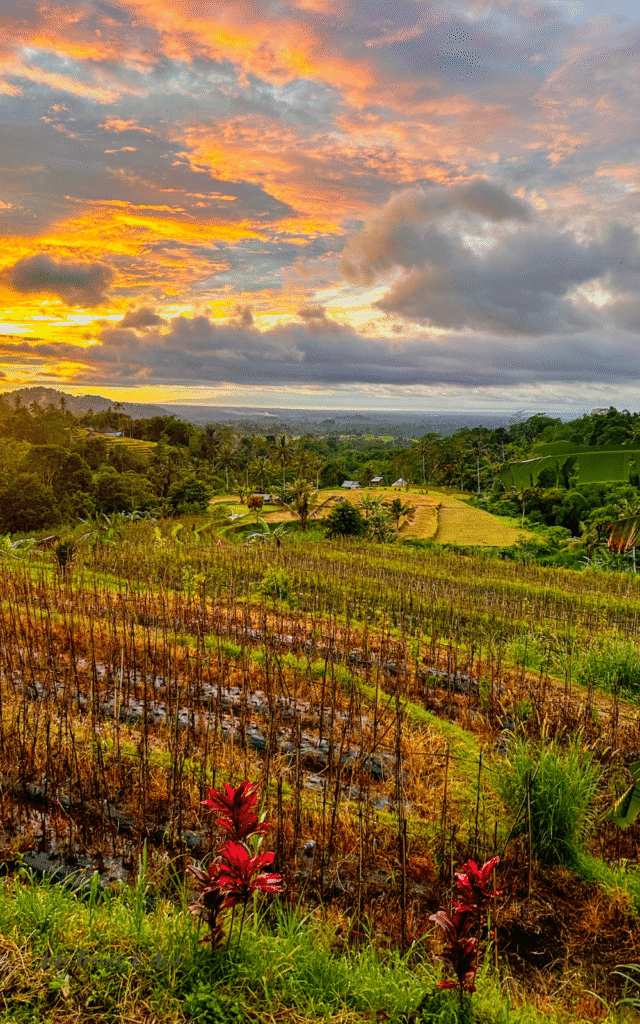
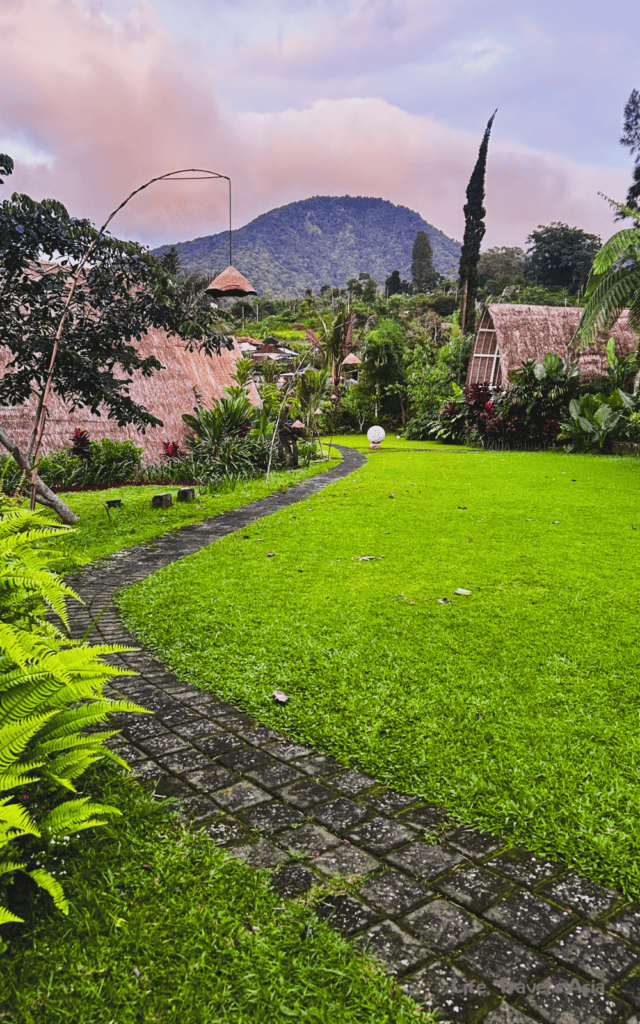
There you go! Hopefully, this blog post helped you plan your Central Bali day trip. This area of the island is truly a gem — and honestly, the scenery and road views leading up to it are some of the best in Bali (another great reason to hire a driver and enjoy the ride).
If you’re still planning your Bali itinerary and looking for other day trips, make sure to check out these day trips from Ubud. Ubud is the ideal base for exploring Bali, and you can see so much of the island from there.
If you found this article useful, don’t forget to share it — more people deserve to experience the real soul of Bali. And if you have any questions about traveling here, drop them in the comments — I’m always happy to help.
Other Articles You May Like If You’re Planning Your Trip to Bali
- Bali Travel Guide: Plan Your Short Trips & Long-Term Adventures
- Bali Travel Itinerary: 10 Days to Fall in Love with the Island’s Unique Soul
- Bali Tips for First-Timers: 30 Things I Wish I Knew Before My First Trip
- Best Places to Stay in Bali: 2025 Guide For First Timers
- 21 Bali Must-Haves: What to Pack for Bali Rainy & Dry Seasons
Did you find it helpful? 📌 Save it on Pinterest!
